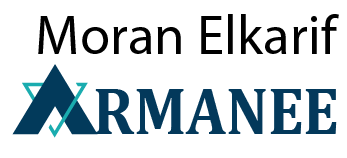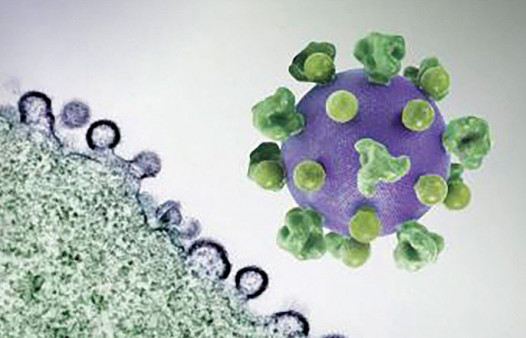Merck’s MK-8527 could offer a long-acting HIV prevention option for people who don’t want injections.
An investigational once-monthly pill holds promise for HIV pre-exposure prophylaxis (PrEP), according to mid-stage study results presented yesterday at the International AIDS Society Conference on HIV Science (IAS 2025) in Rwanda. With favorable pharmacokinetics and a good safety profile, MK-8527 will soon move into late-stage trials.
Much of the enthusiasm at this year’s conference focused on the recent approval of Gilead Science’s twice-yearly lenacapavir PrEP (Yeztugo), but long-acting injectables aren’t for everyone. Some people dislike needles or prefer the simplicity of taking a pill, and oral medications may be easier to roll out worldwide than shots administered by a health care provider at a clinic.
“Until now, long-acting PrEP has been synonymous with injectable formulations, and the oral alternative of monthly MK-8527 could represent a paradigm shift,” Rebeca Plank, MD, MPH of MSD Research Laboratories told reporters at an IAS media briefing. (Merck is known as MSD outside the United States.)
“We hope that this option will provide a user-friendly, systems-friendly option that can be broadly available in a variety of settings,” she continued. “We envision that monthly oral dosing could transform PrEP delivery and implementation models. If the Phase III studies are successful, this product could expand the range of delivery settings beyond medical clinics to locations that allow for flexibility and privacy. This would allow more people to start and to continue on PrEP, ultimately helping us reach our collective goal of ending the epidemic.”
MK-8527 is a novel nucleoside reverse transcriptase translocation inhibitor (NRTTI), a successor to islatravir. The drug works differently than the familiar nucleoside reverse transcriptase inhibitors, both stopping translocation (movement of the reverse transcriptase enzyme) and acting as a chain terminator, or defective building block, as HIV copies its RNA to DNA.
Merck previously explored islatravir, its first NRTTI candidate, for long-acting HIV treatment and prevention, but clinical trials were placed on hold after some participants experienced declining CD4 T cell or total lymphocyte counts at high doses. Combination treatment trials resumed using a lower dose, but development of islatravir as a monthly PrEP option were halted.
MK-8527 does not appear share the same safety concerns. At last year’s Conference on Retroviruses and Opportunistic Infections, Merck scientists reported that the drug showed promising antiviral activity in HIV-positive people and reached protective levels in HIV-negative volunteers with no notable safety signals—including lymphocyte toxicity—in Phase I studies.
This set the stage for a Phase II trial of the safety and pharmacokinetics of MK-8527 for once-monthly oral PrEP (NCT06045507). The study enrolled 350 adults with a low likelihood of HIV exposure in the United States, Israel and South Africa. Nearly 60% were women, about half were white, about 40% were Black and 2% were Asian; the median age was 28 years.
The study participants were randomly assigned to receive MK-8527 at doses of 3, 6 or 12 milligrams or a placebo every four weeks for up to six months. More than 90% received all six doses. They were followed for two months after the last dose.
MK-8527 was well tolerated across doses with a safety profile similar to the placebo, Ken Mayer, MD, of Fenway Health and Harvard Medical School reported. The most common adverse events were headache, nausea and fatigue, which were mostly mild to moderate (grade 1-2) and similar across the MK-8527 arms and the placebo group. Rates of drug-related adverse events ranged from 14.9% in the 3 mg group to 20.2% in the 12 mg group, comparable to the rate in the placebo group (18.4%). Only one serious adverse event (miscarriage) was deemed potentially drug related. There were no clinically meaningful changes in laboratory tests and no HIV seroconversions.
One person each in the 6 mg and 12 mg groups discontinued MK-8527 due to side effects. Two participants had confirmed grade 1 CD4 and/or total lymphocyte count declines that met protocol-specified discontinuation criteria, both of which resolved within 11 weeks. Decreased CD4 or lymphocyte counts were uncommon, with two cases in the 3 mg group, two in the 6 mg group, seven in the 12 mg group and two in the placebo group.
Overall, however, there was “no meaningful change” in mean CD4 or total lymphocyte counts in any MK-8527 dose group or the placebo group, according to Mayer. “The lymphocyte counts bounced around but were really not substantially different from baseline,” he said. “If anything, in the active arms they tended to increase.”
Looking at pharmacokinetics, the parameters for MK-8527 in plasma and its active intracellular metabolite, MK- 8527 triphosphate, in peripheral blood mononuclear cells were dose proportional.
Protective levels were achieved within 24 hours, if not sooner. “The modelling suggests that it may be protective at an hour, but certainly a very rapid onset of protection,” Mayer said. In the 6 mg and 12 mg dose groups, drug concentrations were sustained above the threshold for protection for a bit longer than 28 days, which gives a “cushion of forgiveness” of about a week if people were to take a pill late, he noted.
One audience member asked whether that the pharmacokinetics parameters suggest that MK-8527 might be given just once every two months. Mayer noted that drug levels fall off after around 40 days, saying, “I don’t know that we’d be comfortable necessarily going 56 or 60 days.”
The same participant asked whether MK-8527 might potentially be used in combination regimens for HIV treatment. No existing oral antiretrovirals are dosed less often than once daily, though Merck and Gilead are evaluating islatravir plus oral lenacapavir as a once-weekly option, and Gilead has once-monthly oral integrase inhibitors and an oral lenacapavir pro-drug (GS-3107) in the pipeline. Mayer deferred to Merck regarding plans for MK-8527 for treatment.
Based on these findings, Merck will move MK-8527 into Phase III clinical trials, in partnership with the Gates Foundation and the International Clinical Research Center at the University of Washington.
EXPrESSIVE-10, which aims to enroll more nearly 4,600 sexually active young women and adolescent girls in Kenya, South Africa and Uganda, is expected to start in the second half of this year. EXPrESSIVE-11 (NCT07044297), which will enroll about 4,400 sexually active people who could benefit from PrEP—including gay men, transgender women and men and nonbinary people—in 16 countries. In both trials, MK-8527 will be compared against daily tenofovir disoproxil fumarate/emtricitabine pills (Truvada or generic equivalents). This is similar to the approach Gilead took with the PURPOSE-1 and PURPOSE-2 trials of twice-yearly lenacapavir PrEP.
“Scientific advances against HIV have brought us further than ever imagined and are ushering in a new era in HIV prevention,” Trevor Mundel, MD, president of global health at the Gates Foundation, said in a Merck news release. “With only 18% of global PrEP need currently met, there is a clear and urgent need for options like MK-8527 that may offer the ability to prevent infection. These Phase III trials are a key step toward translating progress into longer-acting options that could help turn the tide on HIV.”
Asked about projected MK-5827 availability, Plank told reporters that this would depend on how quickly the Phase III trials enroll and reach their endpoints. “We hope to be able to make this available as soon as possible,” she said. “We are pursuing very optimistic and aggressive timelines.” Speaking at an earlier conference session, Mitchell Warren of the advocacy organization AVAC suggested that 2028 would be an optimistic but achievable target.
Click here for more news about PrEP.
Click here for more news from IAS 2025.
POZ is an official media partner of IAS 2025.









